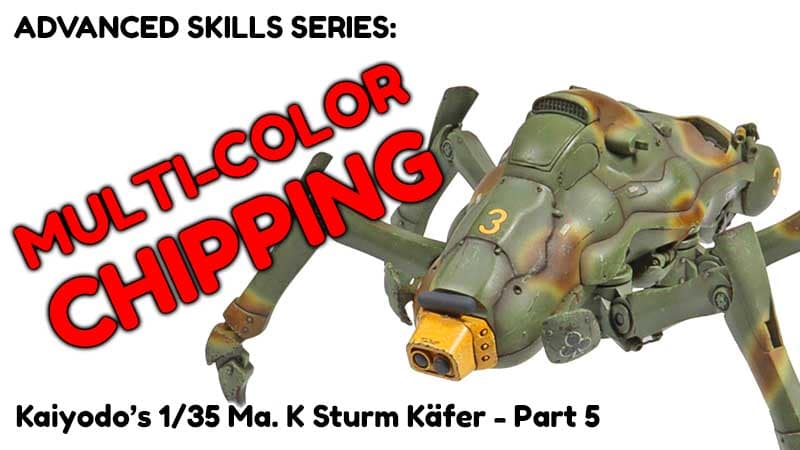Multi-color chipping is one of those simple tasks that takes the appearance of a model to a new level. While single color chipping looks fine in many cases, adding two or even three colors brings in a level of realistic detail.
Rarely do we see real world objects that are solely one color of abrasion in the paint. Even if it’s just a primer coat over metal, the visual difference between surface abrasions in the primer, and other abrasions that go through the primer, can be quite stark.
Multi-Color Chipping
This video takes a look at the process of adding multiple colored chipping to a model. It builds on an earlier video in the Basic Skills series that looked at single color chipping.
As with so many other techniques we apply to our models, simply adding multiple colors and layers can often have an exponential effect visually. It doesn’t just look like two colors doing the same thing. Rather, it invites our mind’s eye to see it as a real object. We’re basically taking advantage of a way of “fooling” the mind into believing something that’s not actually there. As Mick Foley the wrestler wrote about, it invites “suspension of disbelief“.
There are several factors to consider in the process.
Initially, decisions must be made about the layers we’re imagining to be on the object. Is it base material, primer, and then paint? Multiple coats of paint? While we may not model each layer explicitly, I believe having an idea of what the layers would be is important.
Factoring in the underlying material is critical too. Is it metallic? Ferrous? Composite? All of these items will help determine how we handle that aspect of it.
It will also add to the process of answering the questions about what color of chips will we apply. The choice for surface abrasions, deeper scratches, and other factors will drive the actual paints employed.
The type of chipping method to be employed is also important. Generally I like to use multiple methods – most often sponge and brush application. But speckling can also be utilized for very fine chips.
This video will help answer these questions!


Leave a Reply